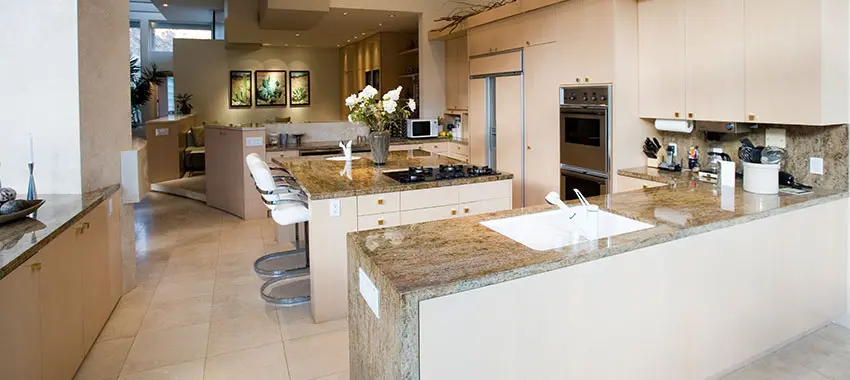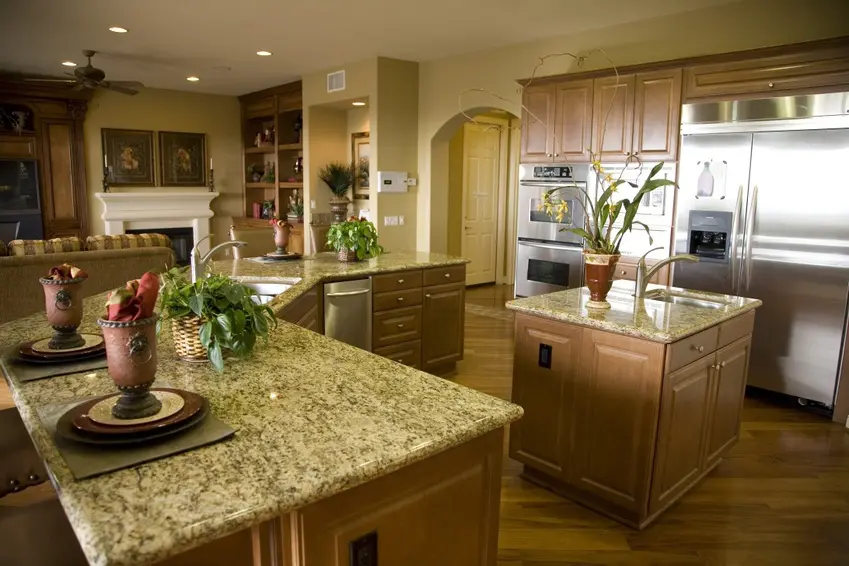Nov
6 Steps On How To Polish Granite Countertops
Polished granite gives your kitchen a sleek, subtle look. Unfortunately, polished countertops are expensive hence not many homeowners can afford them. Luckily, you can install rough countertops then polish them later on. Interested in learning how to polish granite countertops? Here are the steps to follow:
Step 1: Clean the countertops
Everything begins here as you can’t polish dirty countertops. Thankfully, cleaning the countertops is easy. You need warm water and a mild detergent. Mix the two, then apply them on the surfaces using a soft cloth.
Once you are done with cleaning, dry the surfaces with a microfiber cloth. You should never leave the surfaces wet or damp as you put the surfaces at the risk of staining.
Step 2: Make or buy the polish.
You can get the polish in two ways: you can make it or buy it. To make the polish, get a small bowl, baking soda, warm water, and fork. Mix 3 parts baking soda and 1 part water until you get a smooth thick paste. Ensure the paste is smooth before using it.
If you aren’t a dab hand at DIY projects or you don’t want to go through the trouble of making your own polish, buy the polish from your local retail store. When making the purchase, ensure the polish is suitable for granite. As a rule of thumb, avoid general-purpose polishing products as they have been shown to damage granite.
Step 3: Apply polish.
Once you have your polish, your next step should be to apply the polish on your countertops. Place a thin, even coating of the paste on the surfaces. If using baking soda paste, place small dollops of it across the countertops using a spoon.
If using retail granite polish, spray it lightly over your countertops and let it sit there for at least 2 minutes.
Step 4: Buff the countertops
After applying the polish, use a clean, soft cloth and work the polish into the granite. Start from one corner and work your way evenly over the countertop. Rub the polish into the countertops in small circles, making sure you buff the edges as well.
You should note that you should always use a soft cloth for buffing as using a more abrasive cloth will scratch the granite and damage it.
Step 6: Wipe off excess polish
It’s normal to have an excess polish, and the excess streaks can easily ruin the polished surface’s appearance. To remove the excess polish, use a soft cloth and dampen it lightly with warm water.
Use the cloth to wipe down your countertop and eliminate any remaining baking soda paste or retail granite polish.
If you find excess water on the countertops after wiping it down, dry it off using another cloth.
In most cases, your countertops will polish up nicely, but if your countertops have deep scratches, the above remedies won’t get the work done. In such a case, you have no way out other than to hire a professional to polish the surfaces for you.
The professionals use specialized tools, and they can either wet or dry polish the countertops.
Tips on retaining the shine
Polishing the countertops isn’t enough—you need to take care of them to retain the shine. How do you do this? Here are tips for doing it:
Clean spills as soon as they happen: Leaving liquids on the countertops for a long time causes the granite to develop dark, shadow-like marks that mess with the countertops’ look.
You should note that even bright-colored beverages can stain the countertops, so don’t take any risk. As soon as there are spills on the countertops, get rid of them. When wiping the spills, use a soft cloth as a rough one will damage them.
Buff the countertops: To create a nice shine and temporarily reduce the staining risk, buff the countertops with cooking oil. To do it, apply cooking oil to a clean cloth, then make circular motions across the surface. For best results, granite contractors Potomac recommend you do this periodically, such as daily or once a week.
It doesn’t matter the type of oil you use. You can use olive oil, vegetable oil, or even avocado oil. It’s all up to you.



